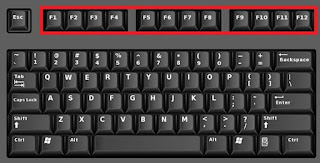In order to understand what stocks are and
how stock markets work, we need to dive into history--specifically, the history of what has come to be known as the corporation, or sometimes the
Limited Liability Company (LLC). Corporations in one form or another have been around ever since one guy convinced a few others to pool their resources for mutual benefit.
The first corporate charters were created in Britain as early as the sixteenth century, but these were generally what we might think of today as a public corporation owned by the government, like the postal service.
Privately owned corporations came into being gradually during the early 19th century in the United States , United Kingdom and western Europe as the governments of those countries started allowing anyone to create corporations.
In order for a corporation to do business, it needs to get money from somewhere. Typically, one or more people contribute an initial investment to get the company off the ground. These entrepreneurs may commit some of their own money, but if they don't have enough, they will need to persuade other people, such as venture capital investors or banks, to invest in their business.
They can do this in two ways: by issuing bonds, which are basically a way of selling debt (or taking out a loan, depending on your perspective), or by issuing stock, that is, shares in the ownership of the company.
Long ago stock owners realized that it would be convenient if there were a central place they could go to trade stock with one another, and the public stock exchange was born. Eventually, today's stock markets grew out of these public places.
Stocks
A corporation is generally entitled to create as many shares as it pleases.
Each share is a small piece of ownership. The more
shares you own, the more of the company you own, and the more control you have over the company's operations. Companies sometimes issue different classes of shares, which have different privileges associated with them.
So a corporation creates some
shares, and sells them to an investor for an agreed upon price, the corporation now has money. In return, the investor has a degree of ownership in the corporation, and can exercise some control over it. The corporation can continue to issue new shares, as long as it can persuade people to buy them. If the company makes a profit, it may decide to plow the money back into the business or use some of it to pay dividends on the shares.
Public Markets
How each stock market works is dependent on its internal organization and government regulation. The
NYSE (New York Stock Exchange) is a non-profit corporation, while the
NASDAQ (National Association of Securities Dealers Automated Quotation) and the
TSE (Toronto Stock Exchange) are for-profit businesses, earning money by providing trading services.
Most companies that go public have been around for at least a little while. Going public gives the company an opportunity for a potentially huge
capital infusion, since millions of investors can now easily purchase shares. It also exposes the corporation to stricter regulatory control by government regulators.
When a corporation decides to go
public, after filing the necessary paperwork with the government and with the exchange it has chosen, it makes an
initial public offering (IPO). The company will decide how many shares to issue on the public market and the price it wants to sell them for. When all the shares in the IPO are sold, the company can use the proceeds to
invest in the business.










